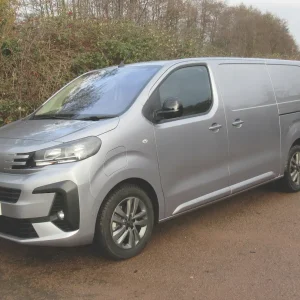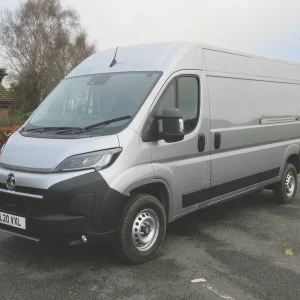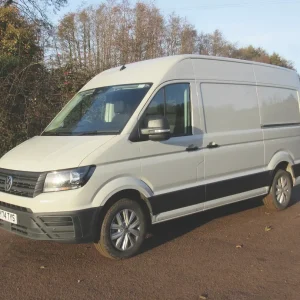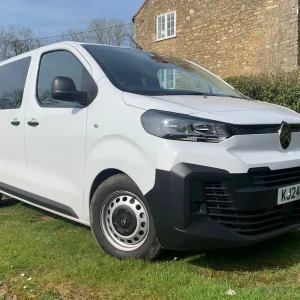Could the eye-wateringly-steep price of a litre of diesel – 175.75p on average at the time of writing – prompt more businesses to switch to electric vans? Some operators are certainly looking more closely at petrol models given that the fuel they use is well over 20p a litre cheaper than diesel, although not all light commercials are available with petrol engines.
The price of electricity has of course increased, but the day-to-day running costs of electric vans remain competitive. They require less servicing than diesels and are exempt from Vehicle Excise Duty, although this concession will end on 1 April 2025.
Nor is there any need to worry about being subject to emission zone charges. Firms running Euro 6 diesel vans have no need to worry either, although this may change if more towns and cities emulate Oxford, and introduce zero emission zones.
Battery-powered light commercials still have four big drawbacks however.
The front-end price remains high, they do not offer the range of petrol or diesel models and they take longer to recharge than a conventionally-powered van does to refuel. Furthermore, the UK’s publicly-accessible charging infrastructure remains inadequate.
Matters have improved in all four areas over the past few years, but there is still some way to go.
It was with these thoughts in mind that we got to grips with a long-wheelbase electric Peugeot e-Partner Professional Premium + van with a three-seater cab. A short-wheelbase model is up for grabs too, and both variants come with the same roof height.
A crew van is available on the longer platform.
Two trim levels are listed, with Professional Premium + being the entry-level choice. If you want features such as satellite navigation, a reversing camera and automatic windscreen wipers then you will have to upgrade to Asphalt Premium +, or start ticking the options list.
Peugeot is part of the vast Stellantis automotive empire which also embraces Citroën, Fiat Professional and Vauxhall. As a consequence e-Partner is also marketed by Citroën as the e-Berlingo, by Fiat Professional as the E-Doblo and by Vauxhall as the Combo-e.
What is more, the same vehicle is sold by Toyota as the Proace City Electric thanks to a joint-venture agreement between Stellantis and the Japanese giant. It comes with an impressive warranty package.
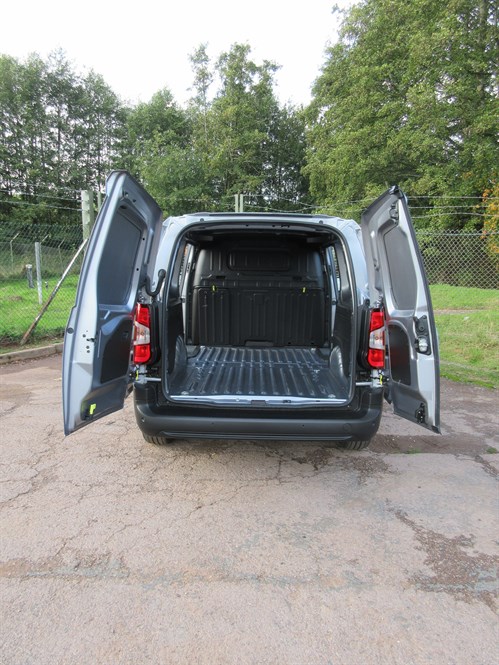
Load bay
The e-Partner’s 3.8m3 cargo bay proved more than capable of accommodating a small garden shed acquired as a kit plus several bags of decorative gravel.
Loading the former through the asymmetric twin rear doors – the narrower of the two is on the offside – was a doddle. The ultra-slim rear wheel boxes helped because they did not get in the way.
The doors can be pushed through 90°, and through a full 180° if you free the easy-to-release stays.
The decorative gravel was heaved aboard through the sliding side doors found on each side of the body.
We did not make use of the six tie-down points; perhaps we ought to have done. As a consequence we were grateful for the presence of a full-height steel bulkhead, which divides the cab from the cargo area.
It looks heftily constructed; reassuring if you are starting to worry about an unrestrained shed clobbering you between the shoulder blades if you need to brake heavily.
The bulkhead boasted a load-thru facility as part of Peugeot’s optional Multi-Flex pack. Fold back a hatch behind the passenger seat closest to the nearside door and then fold the seat back flat, and you get to enjoy an extra 1,273mm of load length; handy if you happen to be carrying planks or pipes.
You can secure the ends of these over-length items in a removable fabric sock which we suspect no-one can be bothered to use. It is also worth noting that the seat can be folded upwards to provide extra carrying capacity for bulky packages inside the cab.
All good news so far, but we were concerned about the lack of any protection for the cargo bed against scratches and scrapes. Bits and pieces of plastic trim afforded the sides and doors some defence, but we felt the entire load bay needed timbering out.
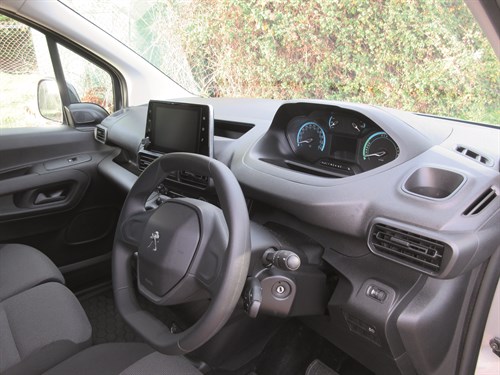
Interior and equipment
While our test van did not boast satellite navigation, most of the features a driver is likely to require were present.
They included air-conditioning, electric windows, power-operated exterior mirrors, a driver’s airbag, and a 12V socket at the bottom of the dashboard. A USB port was positioned higher up.
The vehicle’s gear selector switch sits on a moulding that sticks out from the dashboard and also plays host to the electronic parking brake switch.
You can select from P for Park, R for Reverse, N for Neutral, D for Drive or B for Brake.
Using the last-named triggers the regeneration function, pumping charge into the battery every time you lift your foot off the brake pedal. At the same time it works rather like a heavy truck’s retarder, slowing you down
The intrusive moulding restricts the knee and leg-room offered to the occupant of the middle seat, and we cannot help but wonder whether it makes sense to shoehorn three seats into a cab of this size.
It means that shoulder room for all three occupants is limited, and we doubt that anybody sitting on the middle seat would want to travel more than a few miles given the potential discomfort.
Good to see that the heating and ventilation controls employ easy-to-identify, user-friendly, chunky switches. Far better than having to fiddle about with a touchscreen.
Storage facilities include a deep, lidded, but not lockable, glovebox which sits above a pair of shelves. You will find another shelf behind the 8in colour touchscreen which dominates the middle of the fascia and yet another in front of the gear selector.
Cup holders sit at each extremity of the dashboard with a third one within easy reach of the inboard passenger. Each door has two bins – one big, one small – and can accommodate a 1.5-litre flask or bottle.
There is more storage overhead.
Fold down the back of the middle seat and you have just created a handy pivoting desk. Pull the seat cushion up and you have just revealed a hidden compartment where you can stash your smartphone.
Hiding it there is better than leaving it lying around in the cab and risk getting it pinched. These features are included in the option pack referred to earlier that also includes lumbar adjustment for the driver’s seat.
The seat is height-adjustable, as is the steering wheel.
The conventional instrument panel tells you how much range you have got left, whether you are driving economically, and if regeneration is taking place.
It also tells you which drive mode you are in; Eco, Normal or Power. You use a switch next to the gear selector to make your selection.
The aforementioned touchscreen controls the DAB radio, and Bluetooth compatibility is included in the deal along with Apple Car play and Android Auto. Our demonstrator was covered by a six-month Free2Move Connect Fleet Telematics subscription which addresses everything from its whereabouts to whether it has developed a fault.
On-board safety devices include ABS, Electronic Stability Control, Hill Start Assist, Electronic Brake Assist, and Electronic Brakeforce Distribution. AVAS – Acoustic Vehicle Alerting System – warns vulnerable road users such as pedestrians and cyclists that the e-Partner is in the vicinity when it is being driven at low speeds around town.
Rear parking sensors were fitted, but are optional. They should be standard.
Electrically-assisted power steering is fitted along with disc brakes on all four wheels. MacPherson strut-type suspension is installed at the front and a torsion beam set-up is deployed at the back.
Complete with plastic trims, our e-Partner’s 16in steel wheels wore Michelin Green X 215/65 R16 tyres. An onboard monitoring system warns the driver if they start to lose pressure.
All the doors lock automatically at speeds above 7mph and the vehicle is protected by a Thatcham Category 1 alarm. The headlights illuminate automatically at dusk.
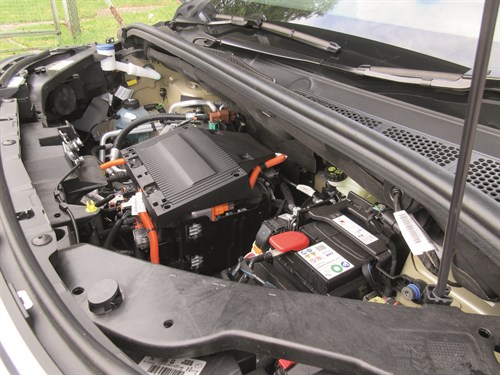
Powertrain
A 50kWh lithium-ion battery is fitted and a combined CCS/Type 2 charging port is positioned behind a flap just above the nearside rear wheel. Our e-Partner came with a 7.4kW on-board charger as standard.
The van’s 100kW (136hp) electric motor produces 260Nm of torque, with power delivered to the front wheels through the single-speed automatic transmission.
Driving
Choose the Power setting and you will have no cause to complain about performance. With all the torque available immediately you will rocket away from rest and overtaking slower-moving traffic where safe to do so is unlikely to be a challenge.
There is a price to pay however.
With the vehicle stationary and the battery fully-charged, selecting Power gave us a projected range of 159 miles. Opting for Normal boosted this figure to a slightly-healthier 167 miles while selecting Eco promised an even-more-creditable 176 miles; ahead of Peugeot’s quoted 171-mile maximum.
This reflects the fact that Power sucks charge out of the battery more rapidly than either of the other two settings. As a consequence we stuck to Normal, which gives you a bit less performance, but a few more miles before you have to plug e-Partner in again.
Going for Eco slows you down noticeably, even when you are unladen. Acceleration is much less brisk, and the cab’s heater pushes out less warmth, so it is not a choice we would recommend in chilly weather.
If you have the MyPeugeot app on your smartphone however then you can pre-heat (or pre-cool) the cab’s interior prior to departure, which might help. You can do so regardless of whether the van is plugged into a charging point or not.
While the range figures quoted may be valid for urban and suburban driving, sustained motorway cruising causes them to drop sharply. This is not a vehicle that is suitable for high-speed intercity dashes.
One way of keeping your speed in check is to use the van’s cruise control and its programmable speed-limiter. Like the traction control system, the limiter can be switched off.
No matter whether we picked Power, Normal or Eco, we found that e-Partner was not all that biddable at low speeds. Caution had to be exercised when manoeuvring into parking spaces for fear that the van would suddenly shoot forward and wallop the vehicle parked in front.
While e-Partner rides and handles well, the level of in-cab tyre and wind noise it generates is too high, and better soundproofing is required. The noise would, of course, be smothered by the sound of the engine in a conventionally-powered van.
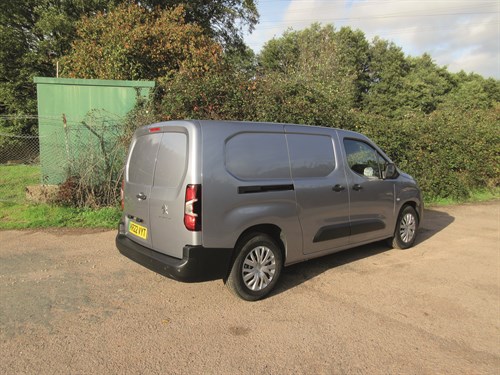
Operating
Service intervals are set at two years/25,000 miles and e-Partner comes with a three-year/100,000-mile warranty. The battery is covered by an eight-year/100,000-mile warranty which guarantees that it will retain up to 70% of its original charging capacity during the warranty period.
Connect your van to a single-phase 32amp/7.4kW wallbox and it will take seven-and-a-half hours to boost the charge from 0% to 100%, says Peugeot. A Mode 3 Type 2 charging cable for use in conjunction with a wallbox is provided.
Use a three-phase 16amp/11kW wallbox instead and you can achieve the same goal in no more than five hours, it contends.
If you have access to a 100kW rapid DC charger however then you can take your battery from 0% to 80% of its capacity in a brisk 30 minutes, it adds.
Side rubbing strips should prevent minor damage to a van that is likely to be at its happiest in a busy urban environment. Hopefully our demonstrator’s grey metallic paint will remain unscathed.
Our e-Partner came with a spare wheel; an extra-cost option. An inflator/sealer weighs less, but is of limited use if a tyre is severely damaged.
Peugeot e-Partner Professional Premium + L2 50kWh
Price (ex VAT) £31,940**
Price range (ex VAT) £31,085–£33,540**
Gross payload 751kg
Load length 2,167mm
Load width (min/max) 1,299mm/1,550mm
Load bay height 1,243mm
Load volume 3.8m3
Loading height 548mm
Rear door aperture 1241mm x 1196mm
Side door aperture 675mm x 1072mm
Gross vehicle weight 2400kg
Braked trailer towing weight 750kg
Residual value 33.2%
Cost per mile 47.0p
Engine size/power 100kW (136hp) electric motor
Torque 260Nm
Gearbox 1sp
Range 171 miles (WLTP)
Battery 50kWh
Warranty 3yrs/100,000mls (battery 8yrs/100,000mls)
Service intervals 2yrs/25,000mls
Insurance group 34E
Price as tested £33,095
*After 48 months/20,000mls p.a – source – KWIKcarcost
**Basic price before government Plug-in Van Grant
Options
Metallic paint £400
Reversing sensors £200
Multi-Flex £450
Full-size spare £105
Rivals
Maxus eDeliver 3
Price (ex VAT) from £34,000**
Load volume 4.8m3
Gross payload 865–905kg
Engines 90kW
Verdict: A bit bigger than e-Partner, and on offer with two different battery packs, eDeliver 3 is marketed as a chassis cab as well as in van guise. Certainly worth a look if you need a bit more space than the e-Partner can offer, and the range predictions made by the manufacturer (of over 200 miles depending on the version you choose) seem to
be accurate.
Renault Kangoo Van E-Tech
Price (ex VAT) £30,600–£33,100**
Load volume 3.3–4.2m3
Gross payload 608–764kg
Engines 90kW
Verdict: Revamped under the E-Tech banner, the electric Kangoo boasts many of the improvements made to conventionally-powered versions of this revivified Renault. It also offers more power, more battery capacity, and a better range between recharges than its predecessor. The changes have undoubtedly made it more pleasant to drive, with performance and handling both elevated to an impressive standard.
Volkswagen ID. Buzz Cargo
Price (ex VAT) £38,125–£42,375**
Load volume 3.9m3
Gross payload 650kg
Engines 152kW
Verdict: With retro styling that makes it stand out in the High Street, the attractive-looking ID. Buzz Cargo delivers outstanding levels of performance, ride quality and agility. Noise is not an issue, and the predicted range of up to 258 miles (if fulfilled) can only add to the van’s appeal, but payload capacity is modest; unlike the steep price-tag.
The Final Verdict
Design 8/10 – Mostly sensible, should appeal to those that want green last-mile deliveries in cities
Cabin 5/10 – Why cram three seats into a cabin that is only wide enough for two occupants?
Ride 8/10 – Smooth thanks to a suspension system that seems able to handle Britains roads
Refinement 7/10 – Good, but silent engine highlights other noises. Cabin needs better sound insulation
Load area 8/10 – Easy to access from three sides. Cargo area needs timbering out though
Handling/performance 7/10 – Nips through bends quickly, but the harder you accelerate, the faster the battery goes
Engine/transmission 7/10 – A competent package, though make use of the regeneration to maximise range
Standard equipment 7/10 – Bulk of what you need is present, but some optional aspects should be standard
Operating costs 8/10 – Front-end price is steep, but running expenditure is competitive even with price rise
What Van? subjective rating 8/10 – Should appeal to those that want zero-emission deliveries in urban areas
Overall Rating = 73/100

